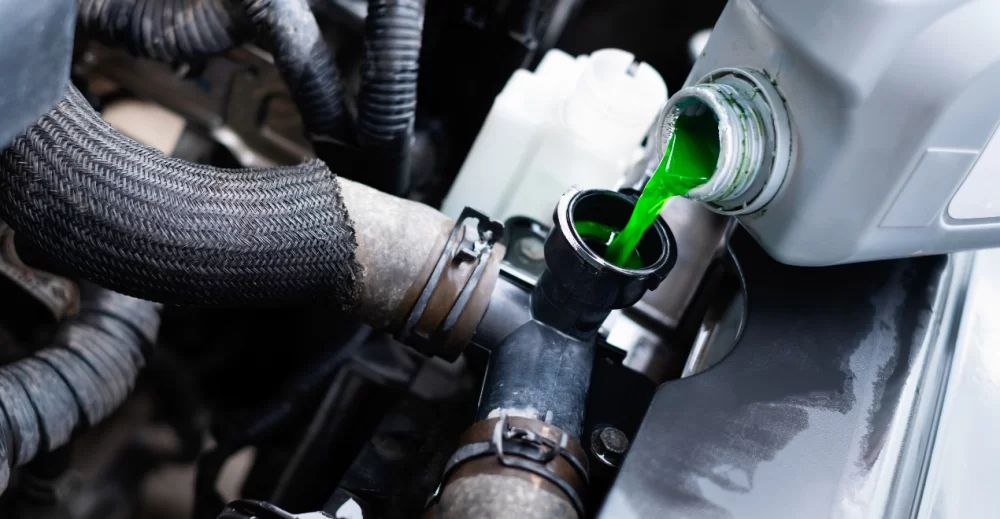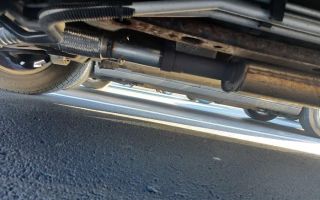How to Fix a Leaking Radiator: A Step-by-Step Guide for Car Owners
If you've ever found yourself stranded on the side of the road with a car that's overheating, you may already know how crucial it is to address radiator issues promptly. One of the most common problems car owners face is a leaking radiator. This can be a frustrating issue, especially when you're far from home or on a tight schedule. But don't worry! Whether you're an experienced DIYer or you're seeking professional roadside assistance, fixing a leaking radiator can be straightforward with the right knowledge. In this guide, we'll walk you through the steps to fix a leaking radiator and how towing and roadside assistance can save you when you're in a pinch.1. Understanding the Causes of a Leaking Radiator
A radiator leak can happen for several reasons. While some of these causes may be minor, others can signal a more serious issue that requires professional help. Let's look at the most common causes of radiator leaks:- Corrosion: Over time, your radiator can become corroded, especially if it's made of aluminum. Corrosion can cause small holes to form in the radiator, leading to leaks.
- Loose Hose Connections: The hoses that connect to the radiator can sometimes loosen over time, causing coolant to leak out.
- Physical Damage: Accidents or debris on the road can cause cracks in the radiator, resulting in coolant leaks.
- Overheating: An overheating engine can cause pressure buildup in the radiator, leading to leaks or even cracks.
2. How to Fix a Leaking Radiator: Step-by-Step
Fixing a leaking radiator requires attention to detail and proper tools. Here’s a simple step-by-step guide that can help you get the job done:Step 1: Safety First
Before starting any repairs, make sure your engine is completely cool. Radiators are under pressure, and handling a hot radiator can result in burns. Wear gloves and protective eyewear, and always work in a well-ventilated area.Step 2: Identify the Leak
Start by visually inspecting the radiator for any visible cracks or holes. If the leak is near a hose, check to see if it’s cracked or disconnected. A radiator pressure test can also help locate hard-to-see leaks.Step 3: Drain the Coolant
Before repairing the leak, you’ll need to drain the coolant. Place a container under the radiator’s drain valve and allow the coolant to flow out. Make sure to dispose of the coolant responsibly, as it is toxic.Step 4: Apply a Radiator Repair Kit
For small leaks, a radiator repair kit can be a quick and temporary solution. These kits typically include a sealant that can be applied directly to the leak. Follow the instructions on the kit carefully for the best results.Step 5: Replace the Radiator Hose (if necessary)
If the leak is coming from a hose, you may need to replace the damaged hose. Use a wrench to remove the old hose, then attach the new one securely. Tighten the hose clamps to prevent future leaks.Step 6: Refill the Coolant
Once the repairs are made, refill the radiator with fresh coolant. Make sure to check for any signs of leakage while the car is running. If everything seems to be in good shape, you're ready to go!3. When to Call a Professional for Help
Sometimes, despite your best efforts, the leak may persist, or the issue might be more severe than initially thought. In cases like these, it’s essential to know when to call for professional help. Here are a few signs that it’s time to contact a roadside assistance service:- Large or persistent leaks: If the leak is large or continues after applying a radiator repair kit, a professional may need to replace the radiator or conduct more extensive repairs.
- Overheating: If your engine is overheating, it’s crucial to stop driving immediately to prevent further damage. A towing service can transport your car to the nearest mechanic.
- Inability to locate the leak: If you cannot identify the source of the leak, a technician can perform a diagnostic test to pinpoint the problem.
4. Real-Life Example: How Roadside Assistance Can Help
Let’s take a look at a real-life example of a customer who had to rely on roadside assistance after dealing with a radiator issue. Mark, a New Jersey resident, was driving home after work when his car suddenly overheated. He pulled over and noticed a coolant leak near the radiator. Unfortunately, he didn’t have the tools to fix it on the spot. After calling a local towing service, Mark was relieved to have a professional arrive within 30 minutes. The technician towed his car to a nearby mechanic, where the radiator was replaced, and Mark was back on the road the next day. This experience showed Mark just how crucial having reliable towing and roadside assistance can be in emergencies.5. Why Choose Roadside Assistance for Radiator Issues?
When you're dealing with a radiator leak, timing is everything. Roadside assistance services can provide:- Quick Response: Many towing services offer 24/7 emergency support, ensuring you’re never left stranded.
- Expert Assistance: Roadside technicians are trained to handle a variety of car problems, including radiator leaks.
- Convenience: With a towing service, you don’t have to worry about driving a car with a damaged radiator. They can transport your car directly to a trusted mechanic.
6. How to Choose the Right Towing Service
When selecting a towing service, it's essential to consider several factors:- Availability: Choose a towing service that offers 24/7 support, especially if you encounter a radiator issue at night or during a weekend.
- Experience: Opt for a company with a proven track record of handling roadside emergencies and car repairs.
- Customer Reviews: Look for towing services with positive customer reviews to ensure reliable and trustworthy service.



























